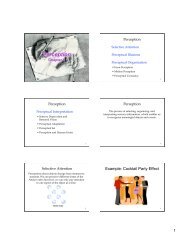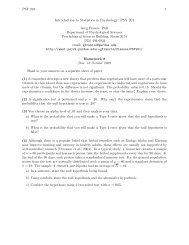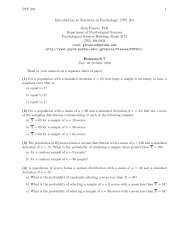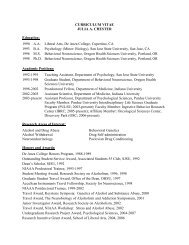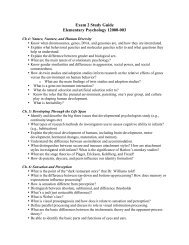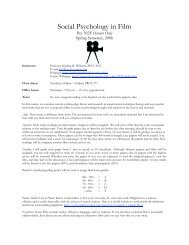Introduction to Cognitive Psychology - Department of Psychological ...
Introduction to Cognitive Psychology - Department of Psychological ...
Introduction to Cognitive Psychology - Department of Psychological ...
You also want an ePaper? Increase the reach of your titles
YUMPU automatically turns print PDFs into web optimized ePapers that Google loves.
Pr<strong>of</strong>. Greg Francis 1/2/12!! For a Reichardt detec<strong>to</strong>r <strong>to</strong>indicate motion, the signal fromthe second area must follow thesignal from the first by just theright length <strong>of</strong> time!! Vary the Interstimulus Interval(ISI) between the stimuli!! The time between <strong>of</strong>fset <strong>of</strong> thefirst stimulus and onset <strong>of</strong> thesecond stimulusTimingISI <strong>to</strong>o short"ISI about right"Korte’s laws!! Apparent motion was highly studied at the turn <strong>of</strong> the 20th century!! Korte (1915) noted that <strong>to</strong> get good motion, you needed <strong>to</strong> increasethe ISI between the stimuli as the distance between them increased!! CogLab data!! (169 participants- from class, 12,824 from global)ISI <strong>to</strong>o long"Purdue UniversityPurdue UniversityMotion representation!! One conclusion <strong>of</strong> studies <strong>of</strong> apparent motionis that motion is a fundamental percept!! It has an explicit representation in the visual system!! You could imagine otherwise, we can be aware <strong>of</strong>something moving withoutactually seeing the movement!! Apparent motion is the source<strong>of</strong> motion for all movies andanimationPurdue University!! Just like for color andorientation, we mightexpect an aftereffect <strong>of</strong>motion!! competition betweenopposite directions <strong>of</strong>motion!! Left-right!! Up-down!! habituating gate!! <strong>of</strong>fset <strong>of</strong> one direction leads <strong>to</strong>rebound in otherMotion aftereffectPurdue UniversityAfter effect!! Motion can be adopted by non-moving stimuli!! http://www.michaelbach.de/ot/mot_adapt/index.html!! Dynamic vision!! flicker!! persistence!! network dynamics!! Masking!! Reichardt detec<strong>to</strong>rs!! Apparent motion!! Motion aftereffectConclusions!! Also used <strong>to</strong> investigate other areas <strong>of</strong> cognitionand types <strong>of</strong> mental problemsPurdue UniversityPurdue UniversityPSY 200: Intro. <strong>to</strong> <strong>Cognitive</strong> <strong>Psychology</strong> 5


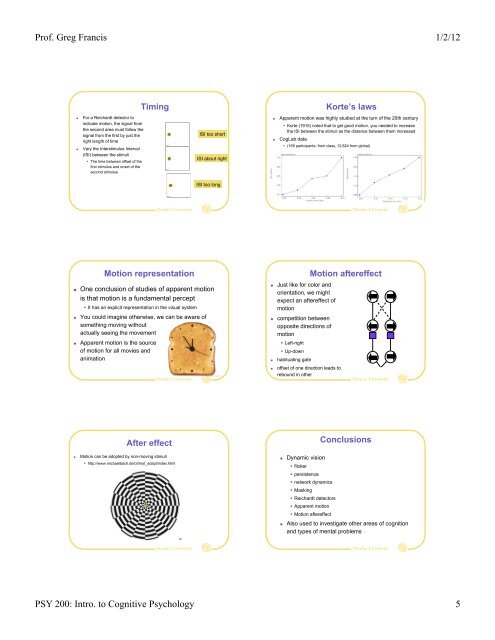
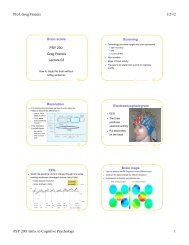

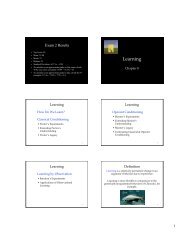
![Exam 4 Study Guide[1]](https://img.yumpu.com/45196739/1/190x245/exam-4-study-guide1.jpg?quality=85)
